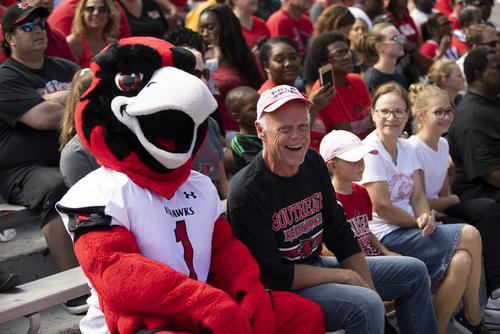Making Your Webpage Accessible
Continue to main contentSoutheast has a lot of content contributors responsible for editing department webpages. There are specific things to keep in mind for page accessibility as you make edits. We want them readily available to you for reference. If you are a content creator, bookmark this page so you have it to refer back to when you need it.
Page Structure
Structuring your page well is a foundation for good accessibility. This means using your headings, tables, paragraphs, and bulleted lists well. Good page structure avoids large, unbroken paragraphs of text. Even for those individuals who read well, large blocks of text can be difficult.
As you create content for your page, remember:
- Use bulleted lists to break up content when possible.
- Keep paragraphs short and succinct.
- Use proper heading structures.
- Use tables judiciously – if there’s a better way to organize your information, use that first.
Headings
Headings on a web page are not a design decision. They aren’t to be created with resized or recolored text, they must be created with the proper heading tags, which should be available to you in the editing toolbar. Instead, think of headings as landmarks, or the branches of a tree. They structure your content and make it easier for everyone to browse quickly.
- There is only one Heading 1 for every web page, and it will be the main header of the page.
- Heading 2 will be your top level headings for your content.
- Heading 3 is a subhead for Heading 2 topics, Heading 4 is a subheading for Heading 3, etc.
- Headings should not be used to style or emphasize a link.
Page Content
There are a few things you have to remember as you develop content for your webpages. Remember as you make edits and write that you are preparing a webpage that the general public will be viewing.
Writing Accessibility
Your webpages are available to be viewed by a wide variety of individuals. Not everyone who needs to look at your page can read at the college level. We understand there may be instances where it will be unavoidable, but the standard for writing on semo.edu should be about 9th grade level. Remember to:
- Keep your sentences short.
- When a smaller word will do, use it instead.
- Your goal in sharing information is to make it as clear as possible to the reader.
- Check your text with a readability app, such as the Hemingway Editor (https://hemingwayapp.com/).
Links
Strike the words “click here” from your vocabulary forever. Linked text must be helpful to people using the site, such as linking the actual text describing the link destination. “Click here” is unhelpful, undescriptive, and tells a user nothing about where the link is taking them.
The only underlined text on any web page should be linked text. Do not use an underline for emphasis on any other text on your page content; instead, use bold or italics if you need to emphasize a word or phrase.
Images
Every image on semo.edu requires an alternative text description. Alt text descriptions provide a variety of advantages. First, they provide a way for a visually impaired user to appreciate an image with a description of what is happening and alt text helps to make the photo relevant to its surrounding content. Second, an alt text description is a good search engine optimization step – describing it well can boost your webpage’s performance in search engine results.
As you write your alt text descriptions remember to:
- Describe the photo itself.
- Avoid descriptions that say “photo of” or other similar phrases.

Example alt text: Rowdy the Redhawk mascot sits next to a laughing fan in a crowded stadium, ready for a football game.
As you choose images for your web page, remember, any images that contain any text are inaccessible to screen readers. Images (jpgs or pngs) of posters, flyers, and other art with graphical representations of words are not accessible to people who are using screen readers to browse a web page and therefore do not belong on semo.edu.
Help, Questions, and More Resources
If at any point you have a question about your website’s accessibility, please feel free to reach out to web@semo.edu or (573) 651-5934 and we’ll be happy to help!
If you are curious about accessibility and want to read more, you can visit W3C’s Web Content Accessibility Guidelines.